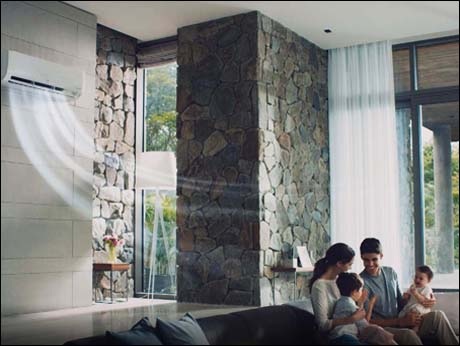
This summer, things are cooling down. New technology is halving the power bill for air conditioners
By Vishnu Anand
Bangalore, March 15 2017: Industrialization, global warming, climate change – and many more such buzzwords erupt every summer as the barometer touches new heights every year. While all of us have our two paisa-worth to contribute to discussions on these jargons (especially on social media), we find a tactical solution by procuring air conditioners for our households to cool things off. Of course, the price you need to pay in return is bulkier power bills month after month. This is set to change in the summer of 2017.
For the last couple of years, a path breaking innovation called inverter technology has taken the aircon world by storm. By dynamically adjusting compressor speeds depending on real-time cooling of the room, buyers could save massively on power bills since the aircon ran at full throttle for the first 20 minutes or so, and then gradually reduced the speed (and consequently power consumption) as the room became cooler and cooler. This year, the inverter technology has gone a step ahead – thanks to some cool Indian innovation – and offers even more power saving.
The new-age compressor for inverter air conditioners come with not one, but two rotors, which cools up and cools down much faster than traditional inverter ACs. This means the 20 minutes it takes to cool up gets reduced, consequently saving your power bills by up to 50% over a period of one year. LG is the frontrunner in this technology. What it calls the Dual Inverter technology offers faster, quitter and more stable cooling in its new range of air conditioners. LG’s manufacturing plants in Greater Noida and Pune have already started manufacturing these innovative Dual Inverter ACs to cater to the upcoming summer season. The new range of 45 ACs also offer auxiliary features like stabilizer-free operation and an extended 10-year warranty on the compressor, 5-year warranty on the condenser for each of the 45 models that are priced between Rs. 36,000 to Rs. 54, 000. Considering the fact that air conditioners contribute to 30-40% of overall summertime power consumption, more efficient aircons just not save your personal power bills, but also do a small bit towards energy conversation
-----------------------------------------------------------------------
See Image story on Aircon technology
-----------------------------------------------------------------------
New energy efficiency benchmark
The world over, performance standards of air conditioners were based on something called EER or Energy Efficiency Ratio. EER essentially calculates power consumption as output power against input power. The inherent flaw with this logic is the simple fact that temperature never remains the same all through the year. Even within the summer timeframe, temperature ranges change, sometimes drastically. The Indian Bureau of Energy Efficiency (BEE) has formulated a standard called ISEER ( see box). This new paradigm for AC energy performance demands that manufacturers innovate and ensure that maximum cooling is achieved in a minimal timeframe. As end users, we are the biggest beneficiaries since we will end up saving half the money on power bills and have a range of efficient devices to choose from, hopefully at compelling price points.
All gas, no talk!
One final aspect of AC performance is the refrigerant gas that flows through the AC. The environment-harming Freon is so yesterday. The current generation of gases are called HFC or Hydro Fluoro Carbon from which harmful Chlorine was eliminated. The most common HFC used in air conditioners is R-410A.; Another HFC used widely is R-32. Both are zero rated when it comes to depleting the ozone layer. R-290 used by a few Indian makers is said to be even better -- it is a HC ie without the Fluorine and also known as propane.
While air conditioners have traditionally been at the receiving end of criticism for being nature-unfriendly, looks like the time has come where you can save on power bills as well as do your bit to for the environment. A cool summer to you!